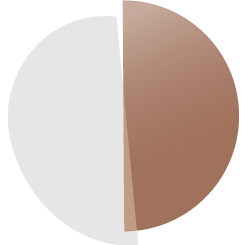Facial paralysis is loss of facial movement because of nerve damage. Your facial muscles droop or become weak. It usually happens on just one side of the face and is typically caused by:
- infection or inflammation of the facial nerve
- head trauma
- head or neck tumor
- strokeFacial paralysis can come on suddenly (in the case of Bell’s palsy, for example) or can happen gradually over a period of months (in the case of a head or neck tumor). Depending on the cause, the paralysis might last a short or extended period of time.
What Causes Facial Paralysis?
Bell’s Palsy
According to the National Institute of Neurological Disorders and Stroke, Bell’s palsy is the most common form of facial paralysis. Every year, 40,000 Americans experience sudden facial paralysis due to Bell’s palsy [NINDS]. This condition causes the muscles on one side of the face to droop noticeably.
No one knows exactly why Bell’s palsy occurs. It may be related to a viral infection of the facial nerve. The good news is that most patients with Bell’s palsy recover completely in about six months.
Other Causes
Other causes of facial paralysis or weakness include:
- skull fracture or injury to the face
- head or neck tumor
- stroke
- chronic middle ear infection or other ear damage
- high blood pressure
- diabetes
- Lyme disease, a bacterial disease transmitted to humans by a tick bite
- Ramsay-Hunt Syndrome, a viral infection of the facial nerve
- autoimmune diseases such as multiple sclerosis, which affects the brain and spinal cord, and Guillain-Barre syndrome, which affects the nervous system
What Are Symptoms of Facial Paralysis?
Facial paralysis has a major impact on a person’s quality of life. You may lose confidence and feel embarrassed. In addition, facial paralysis can cause:
- facial pain
- headaches or dizziness
- earaches, ringing in one or both ears, and sensitivity to sound
- difficulty talking
- inability to express emotion
- difficulty eating or drinking
- drooling
- muscle twitching
- tearing of the eye
- dryness of the eye and mouth
Patients who aren’t able to close their affected eye will need to take extra care to help prevent long- lasting eye damage.
Free Gracilis Transfer Surgery
In order to restore smile to the face we need to replace the nerve that is not functioning and provide muscles to create movement.
One of the nerves that can be used is the facial nerve from the opposite side (we have two facial nerves, one on each side of the face). The working nerve is used to communicate with the affected side via a cross facial nerve graft, this is a surgical procedure which essentially acts like an extension lead.

Another nerve that can be used is a motor nerve on the affected side of the face. A motor nerve transmits instructions to muscles when we make a voluntary movement, such as chewing. Commonly used are the facial nerve and masseteric nerve which are joined together. The masseteric nerve is normally used to activate the chewing muscles but can be used to provide a nerve supply to the paralysed facial nerve and thereby help to restore the smile. .
When patients have experienced facial paralysis for more than two years, the native facial muscles will often have become non-functional, this is because there has been insufficient nerve supply to the muscle to create movement. The free gracilis transfer uses a muscle from the thigh to act as a replacement motor, which will create movement when connected to the nerve to activate it.
It takes a minimum of 3 months from the operation to start to see movement in the muscle as small twitches, which continues to improve for up to two years.


